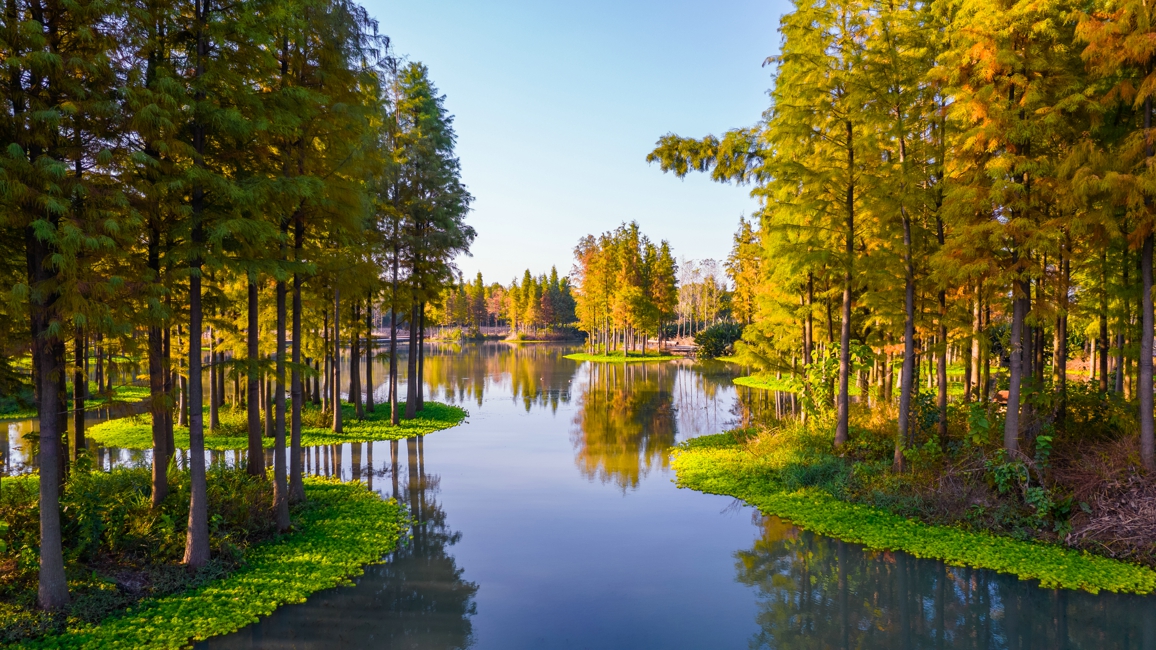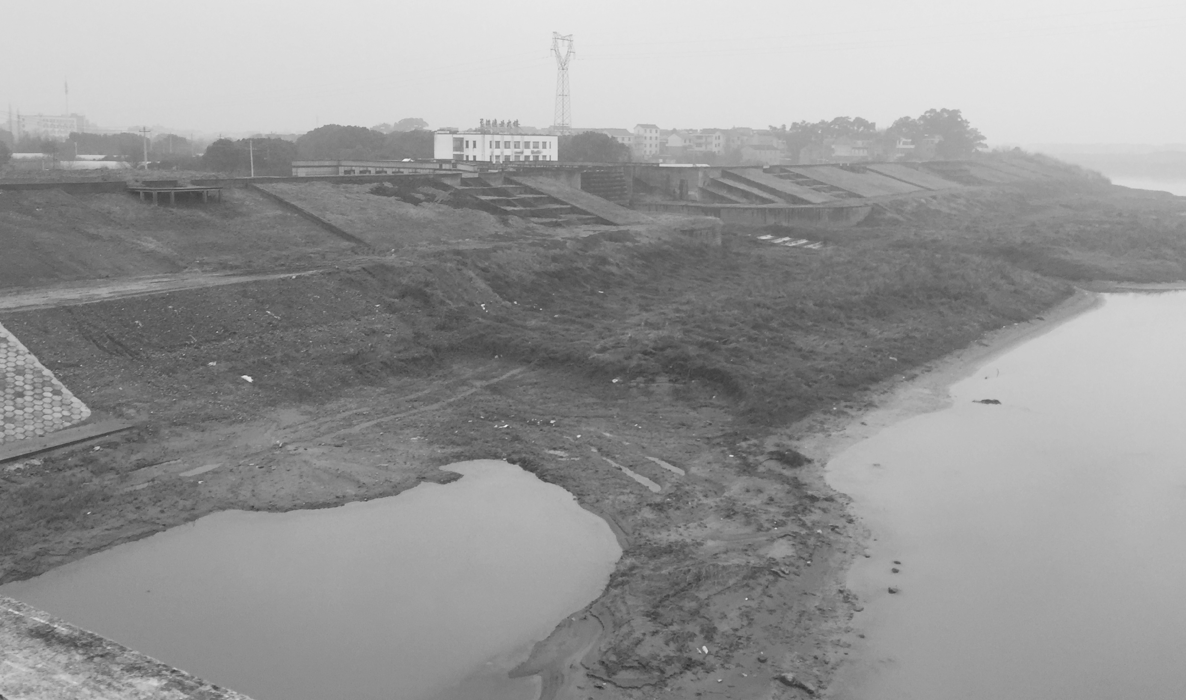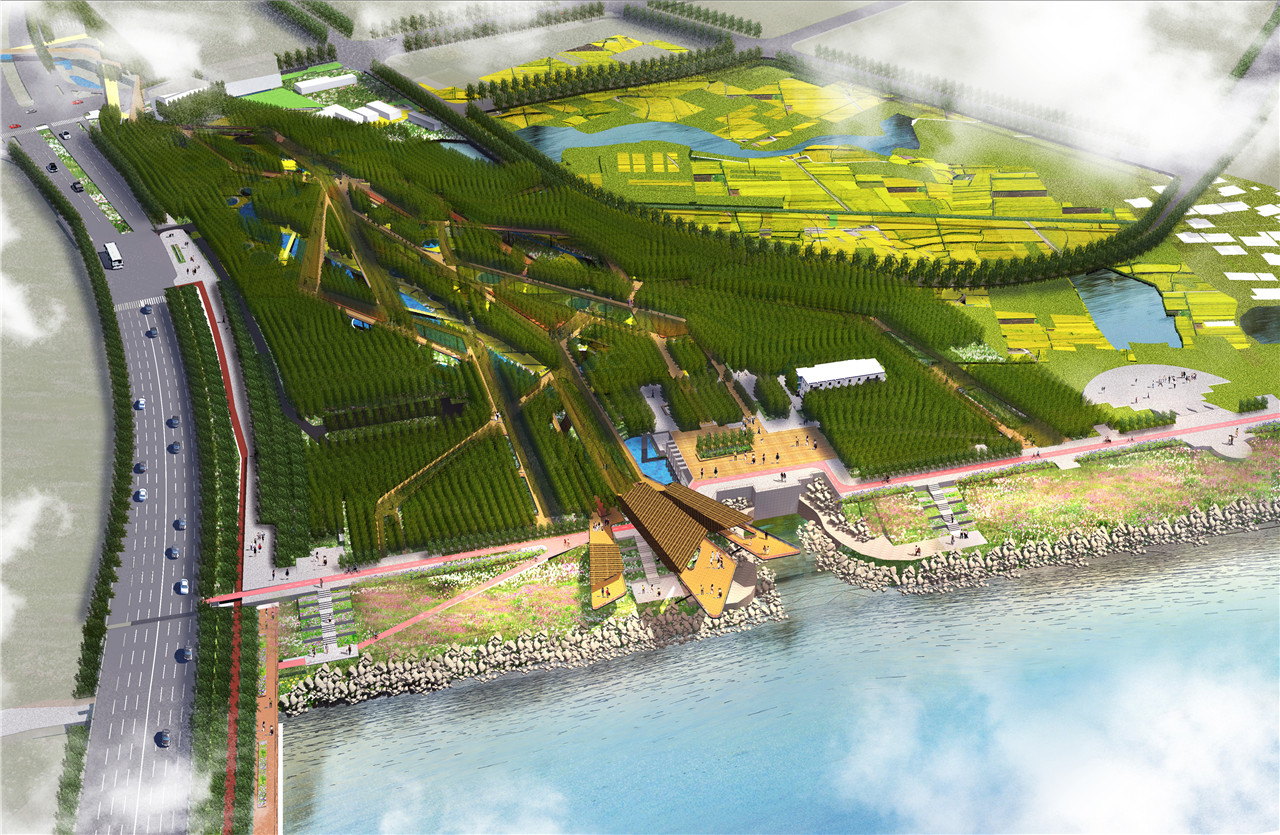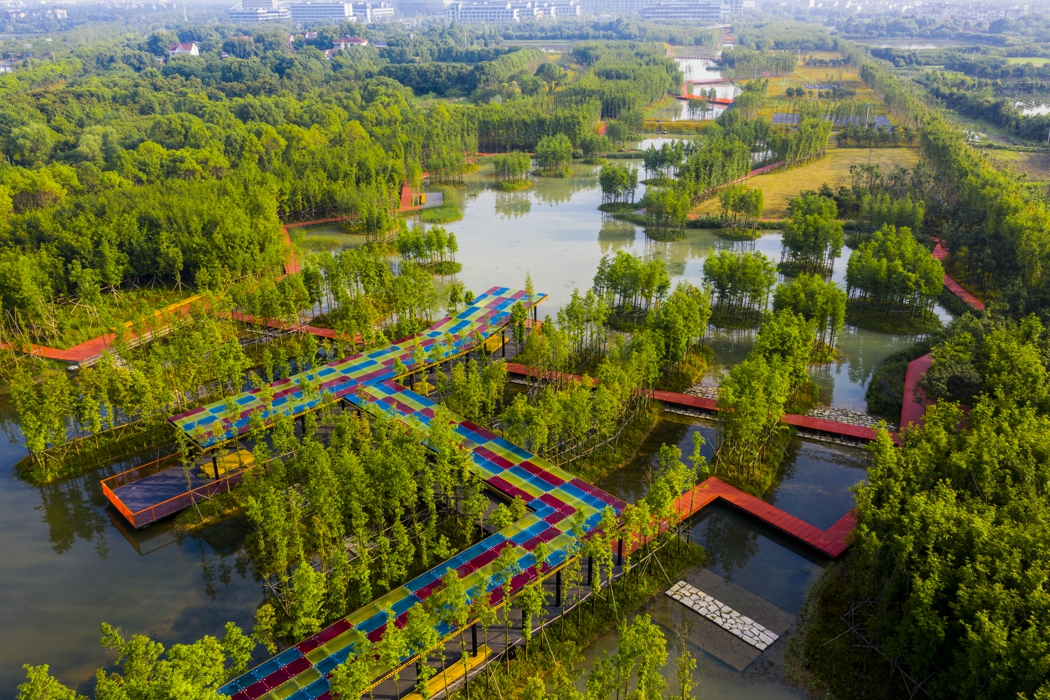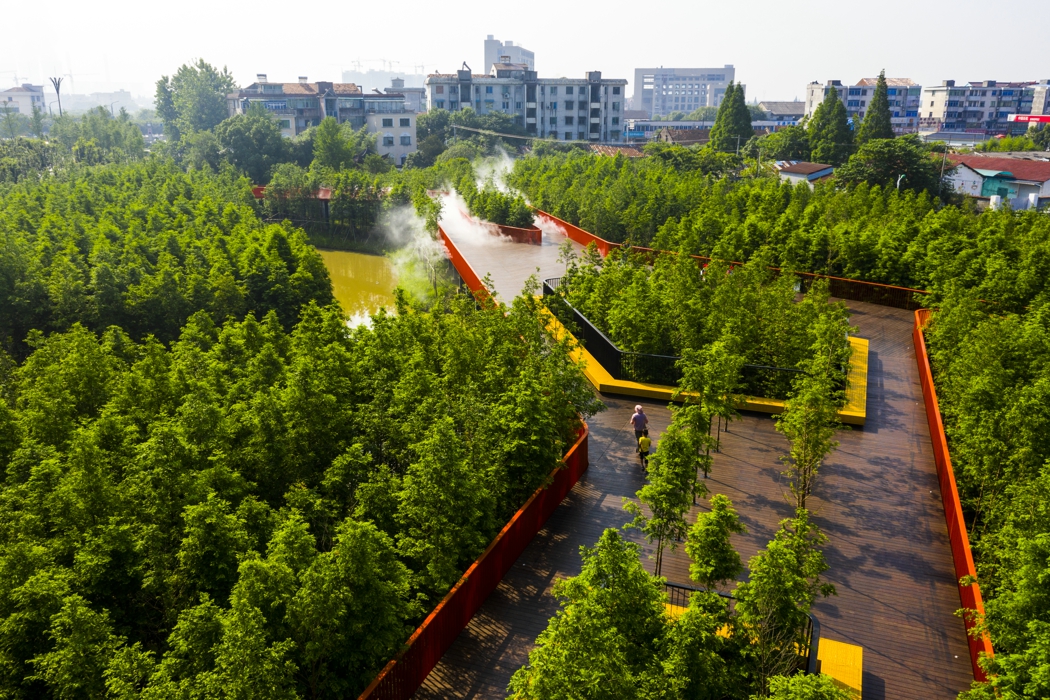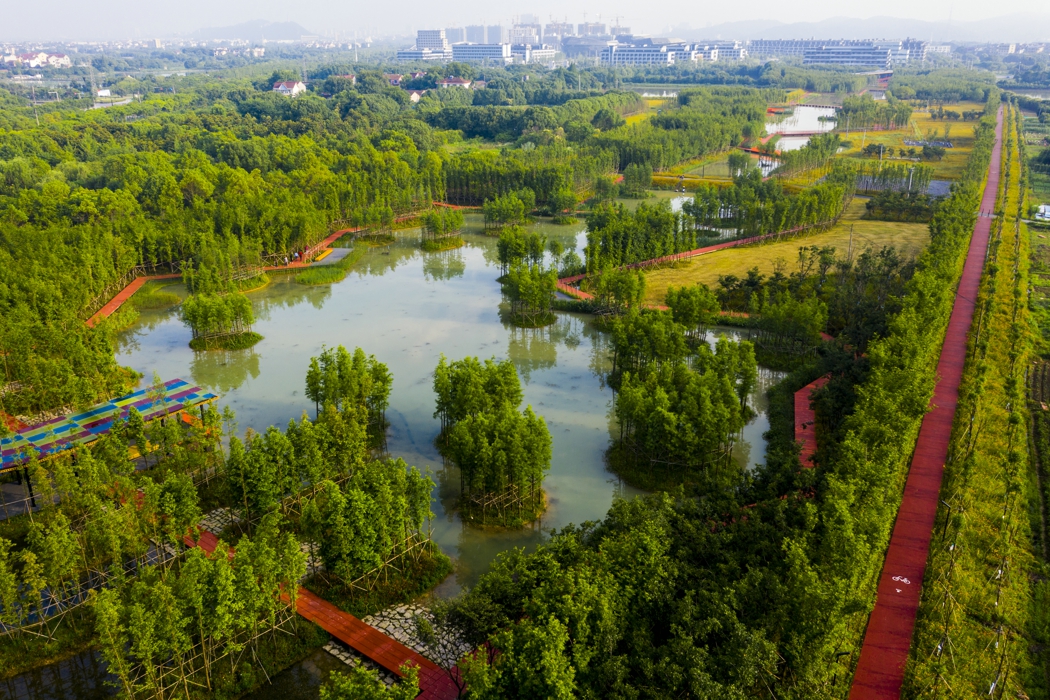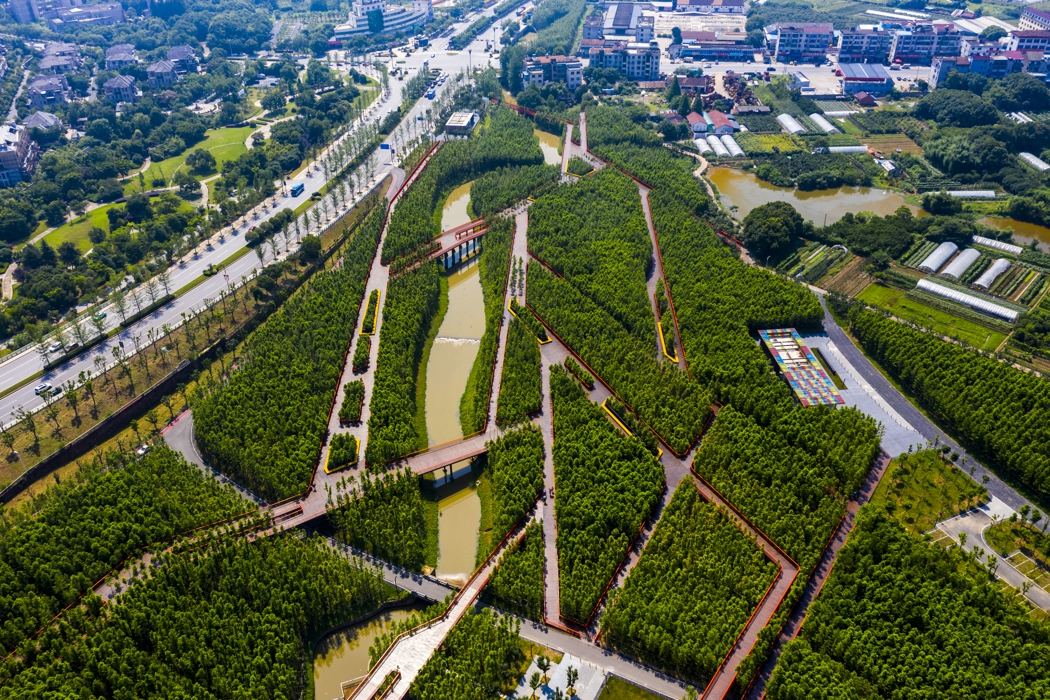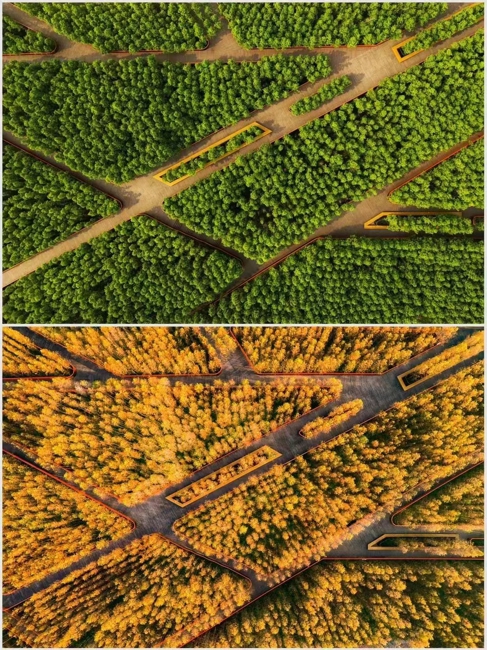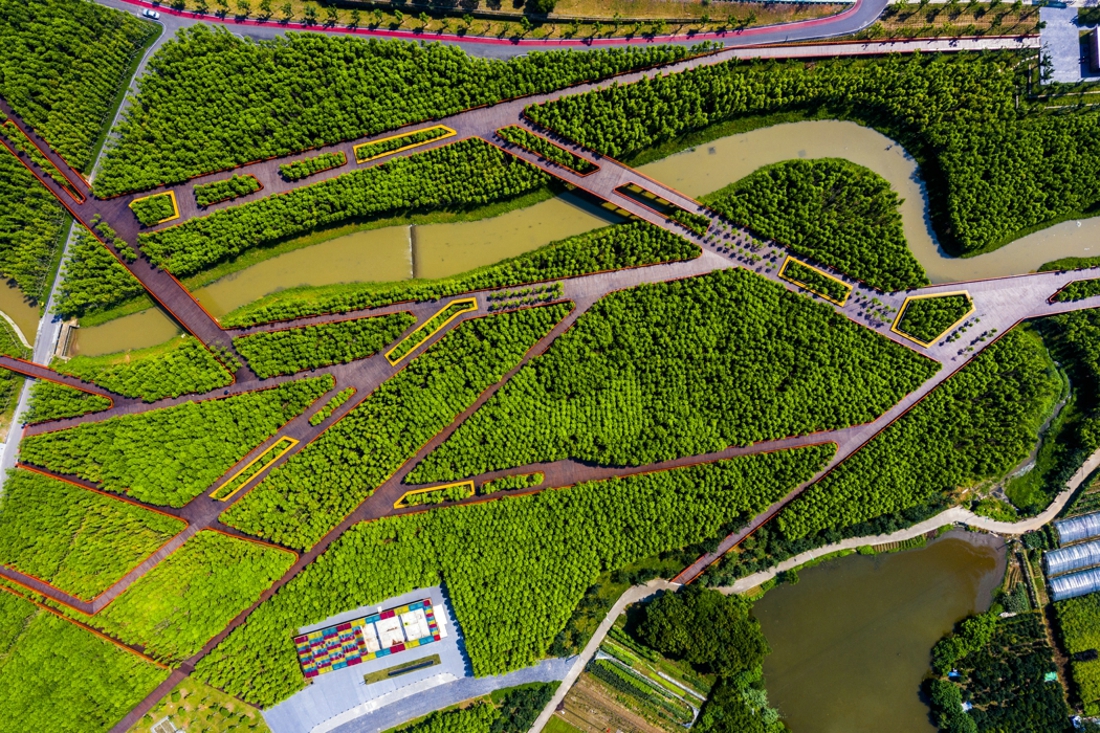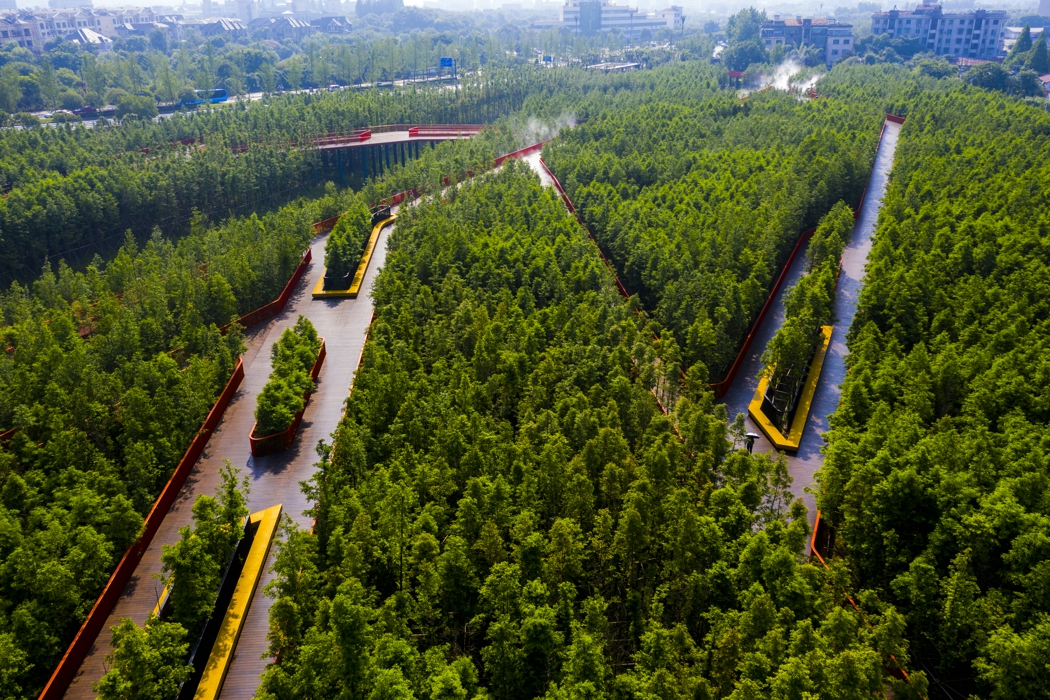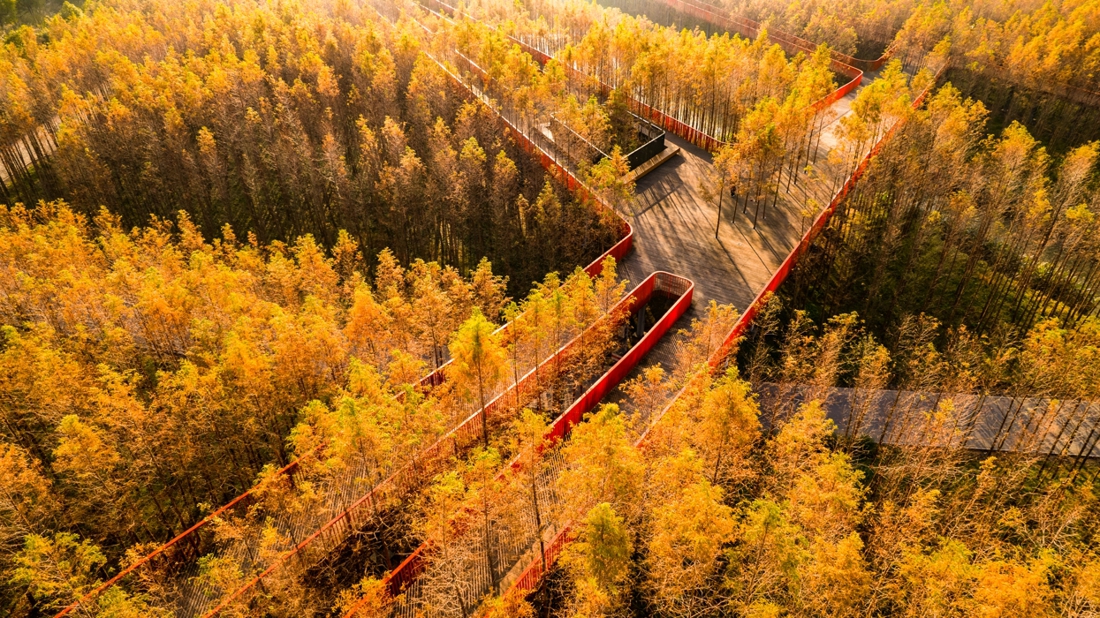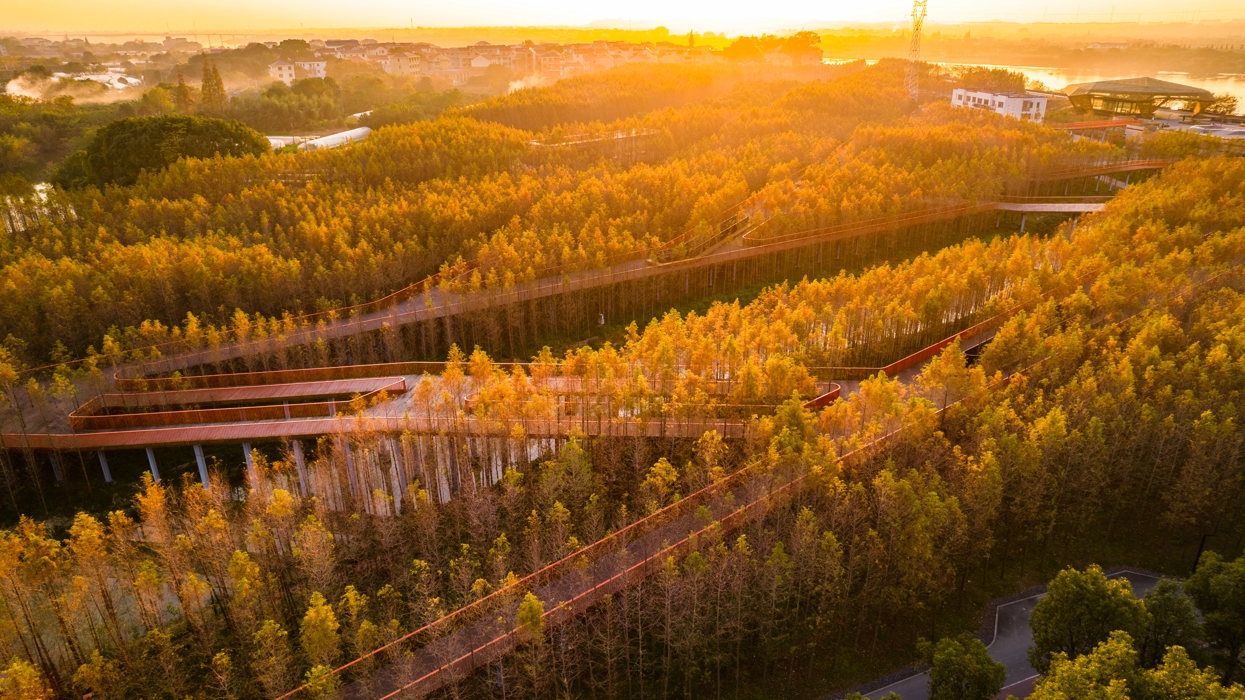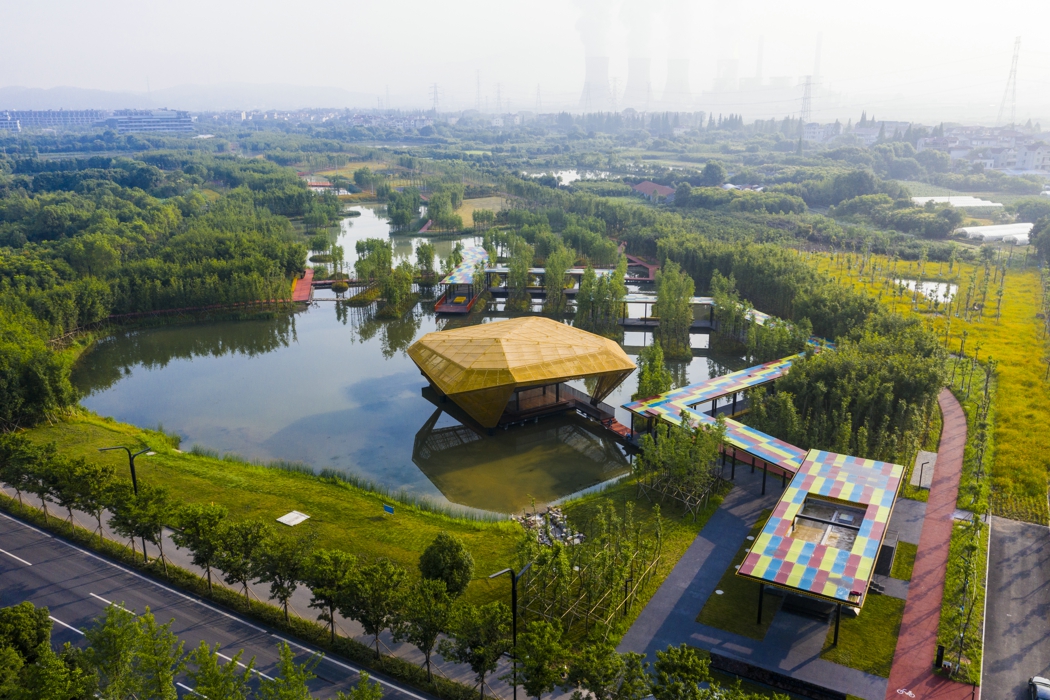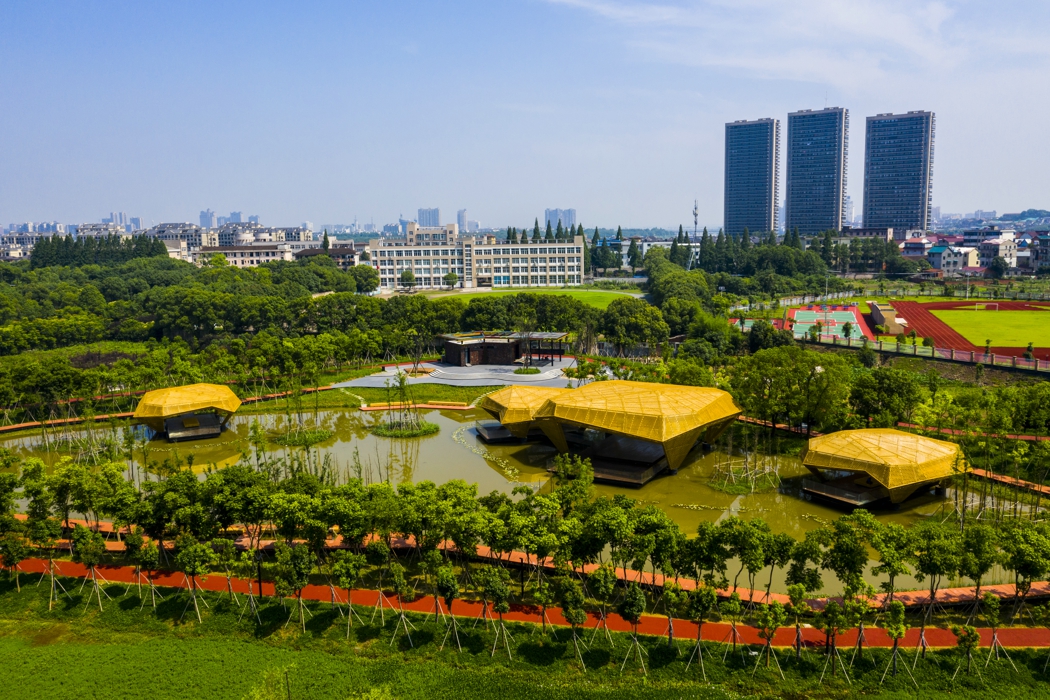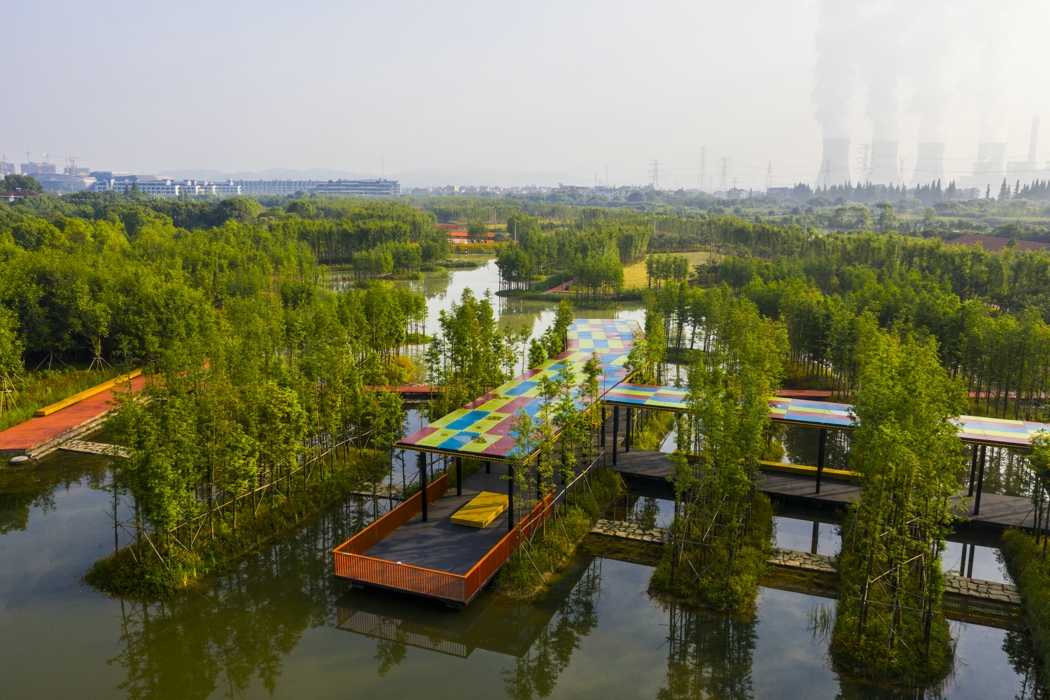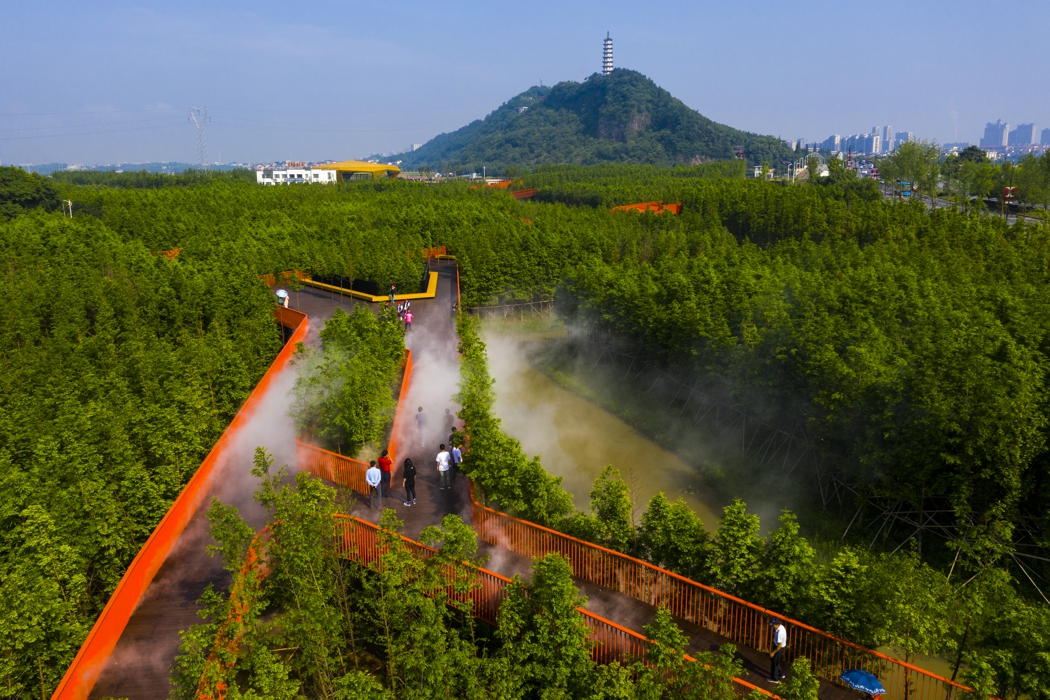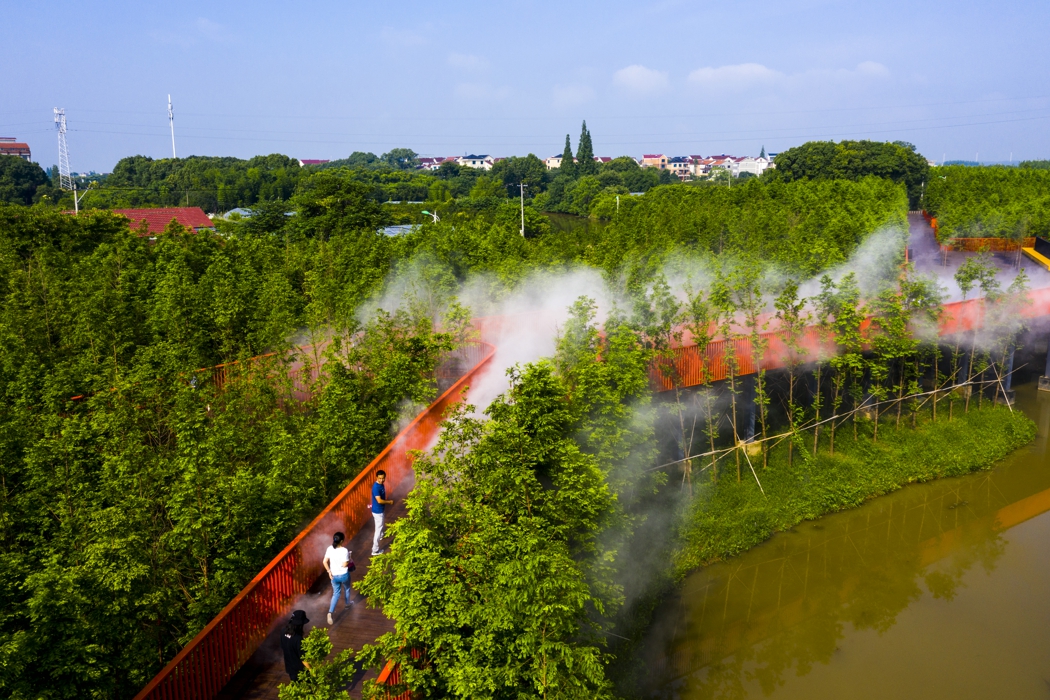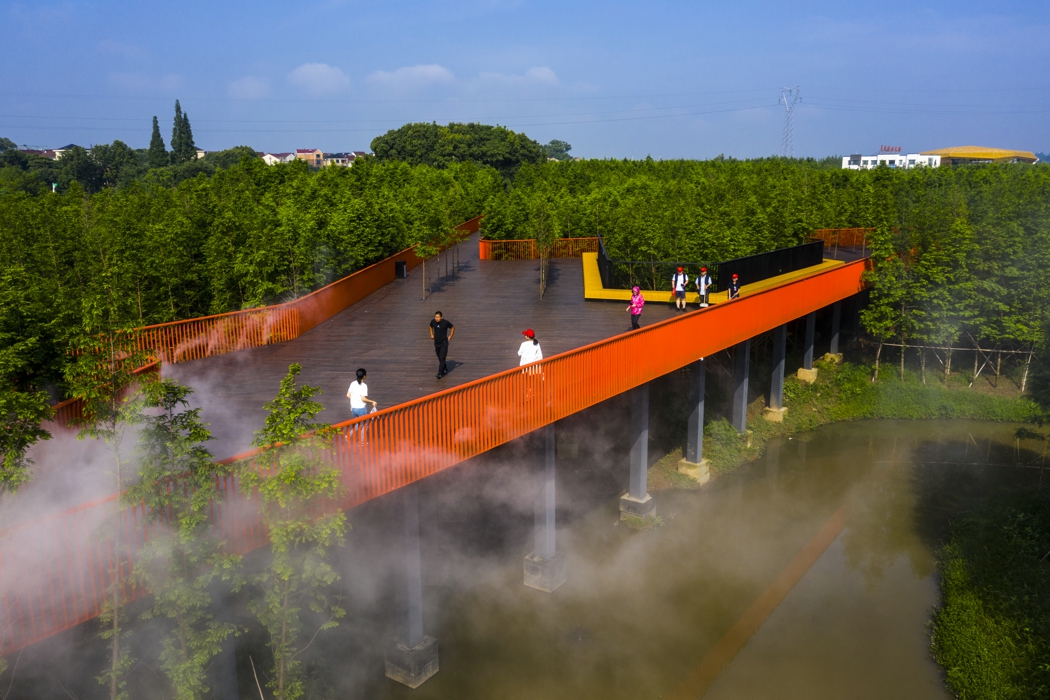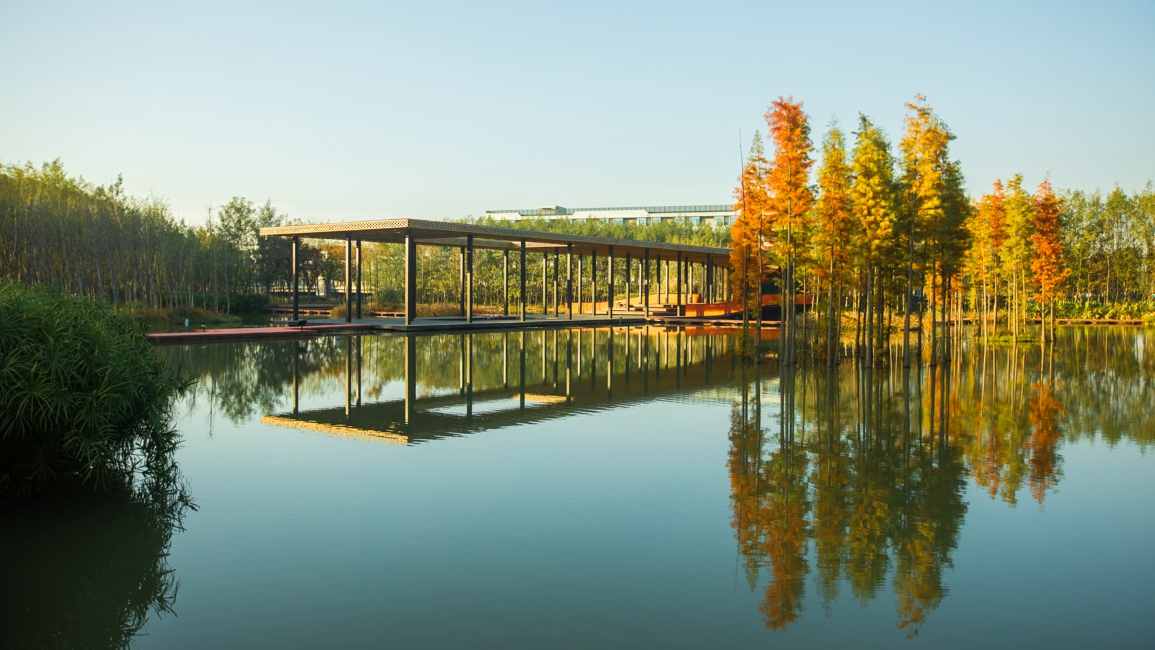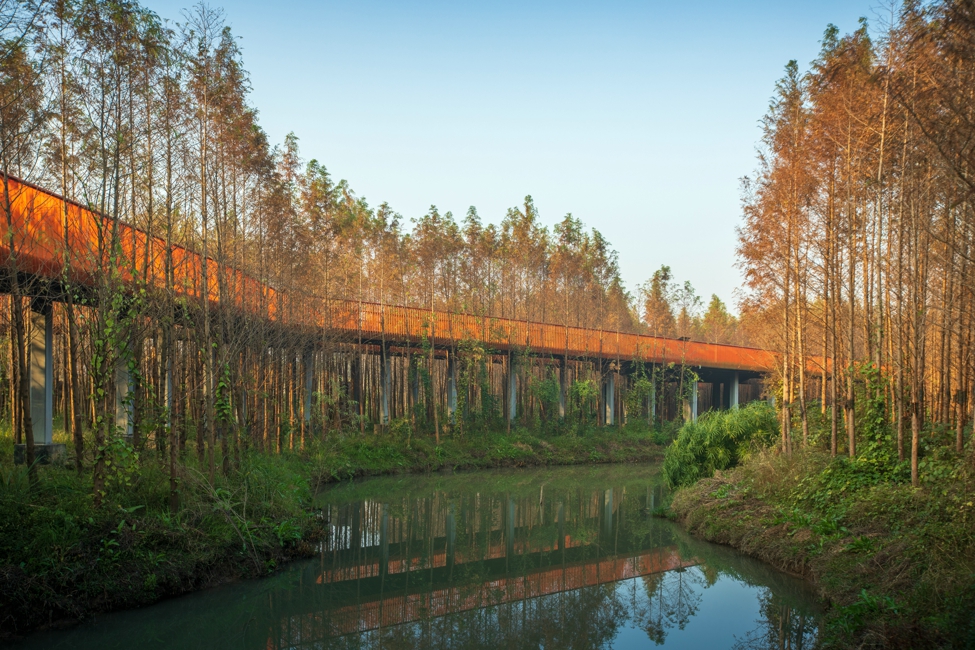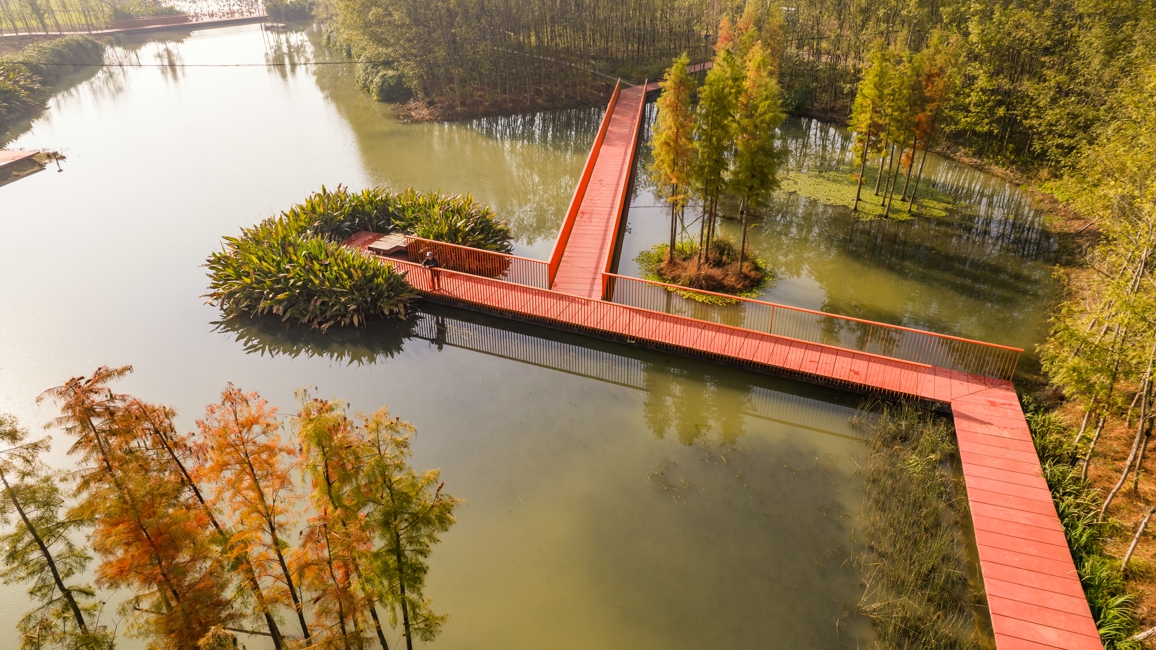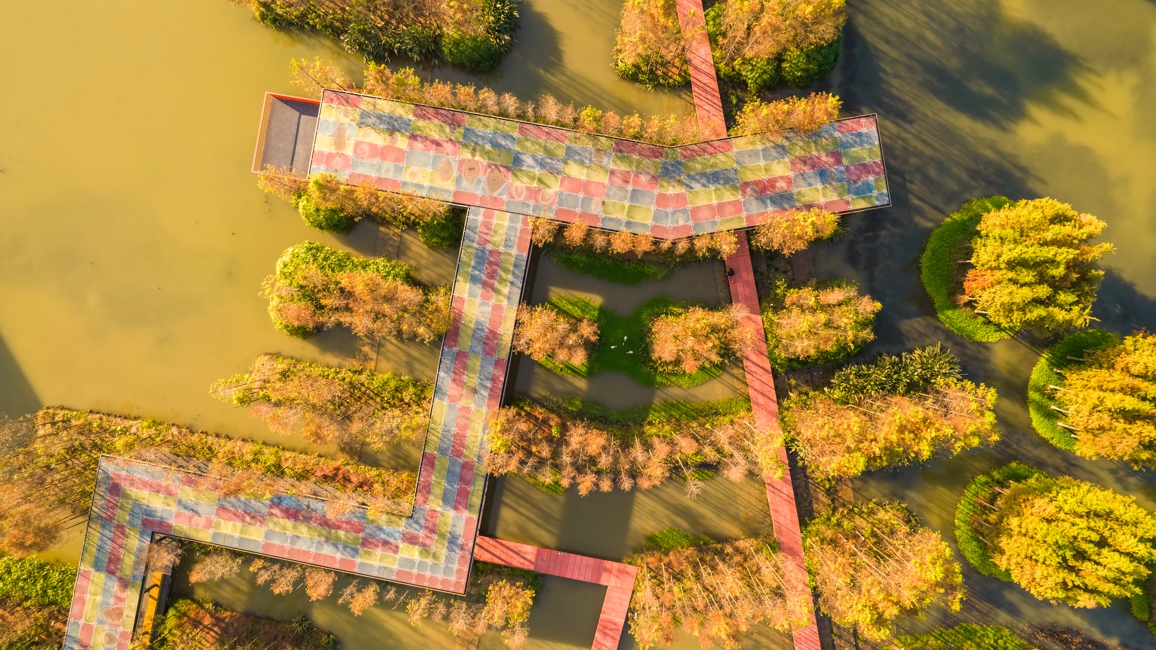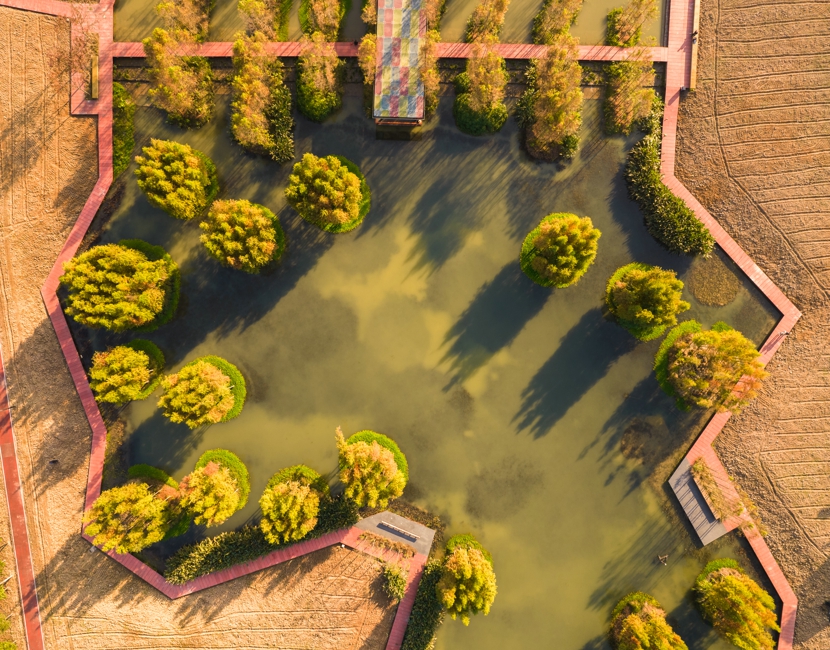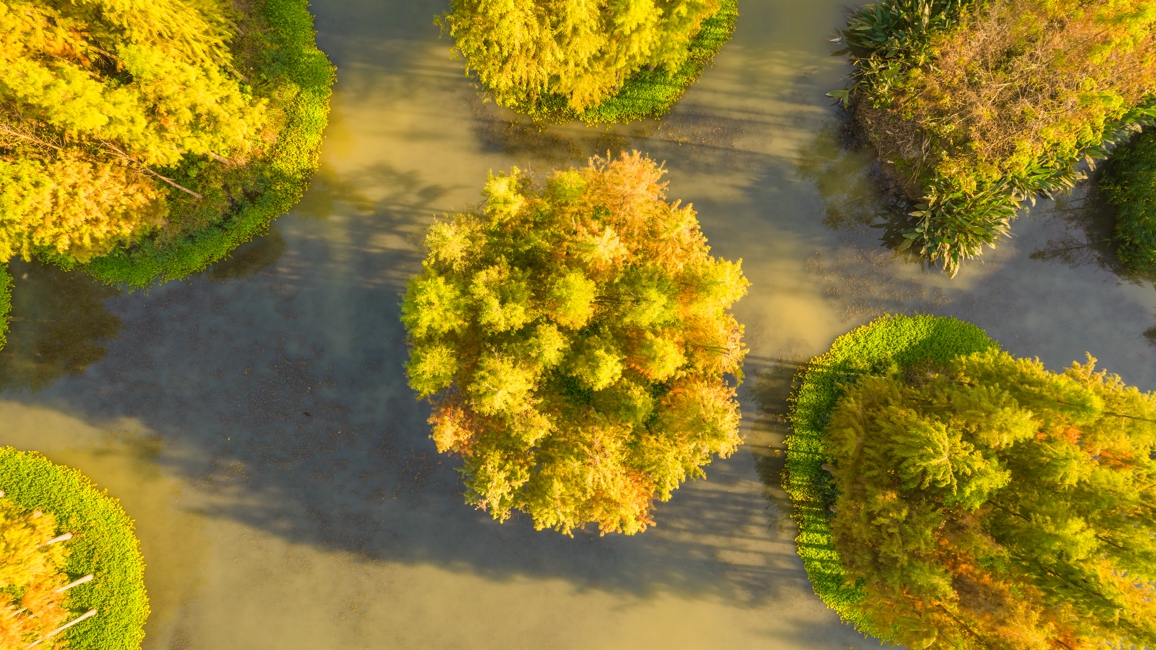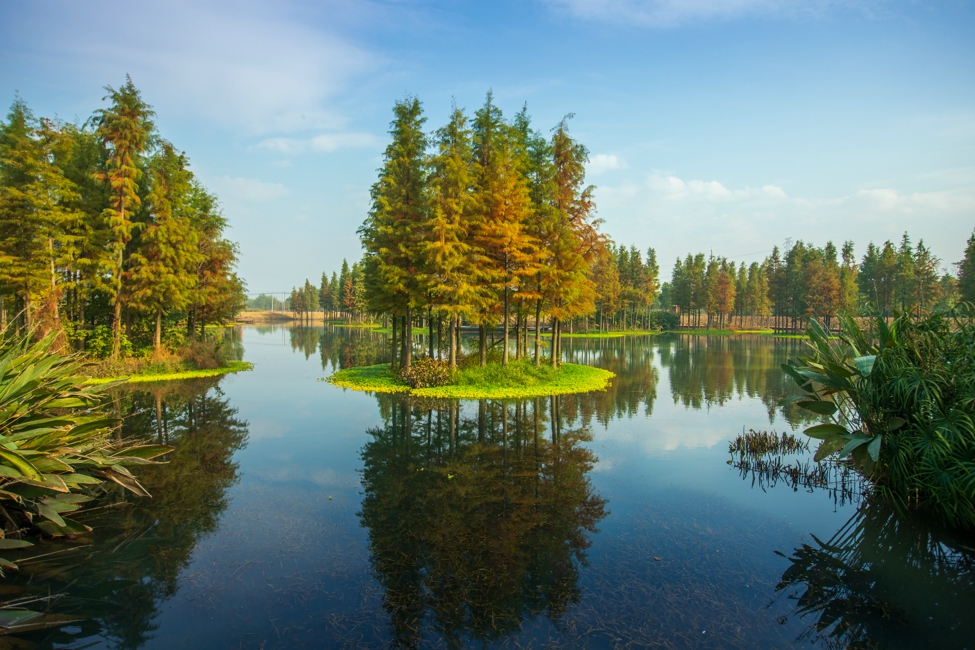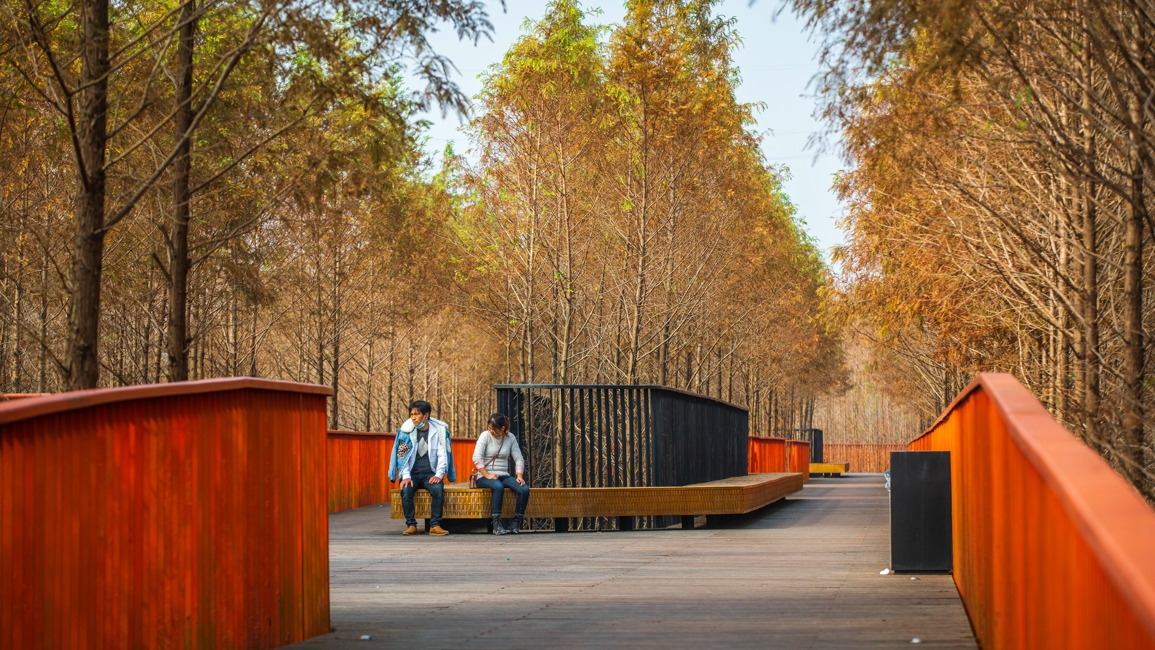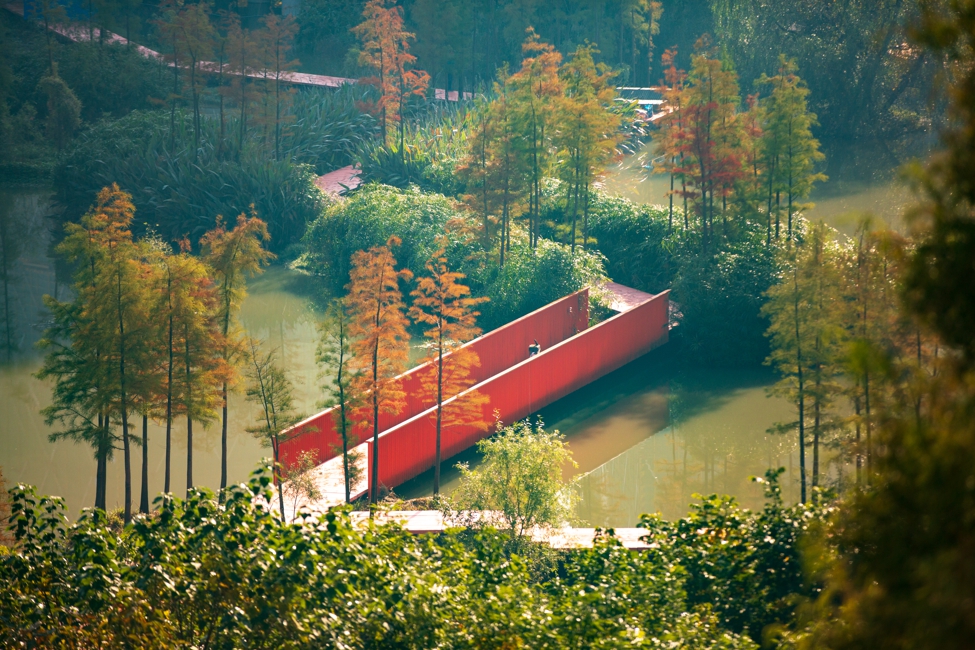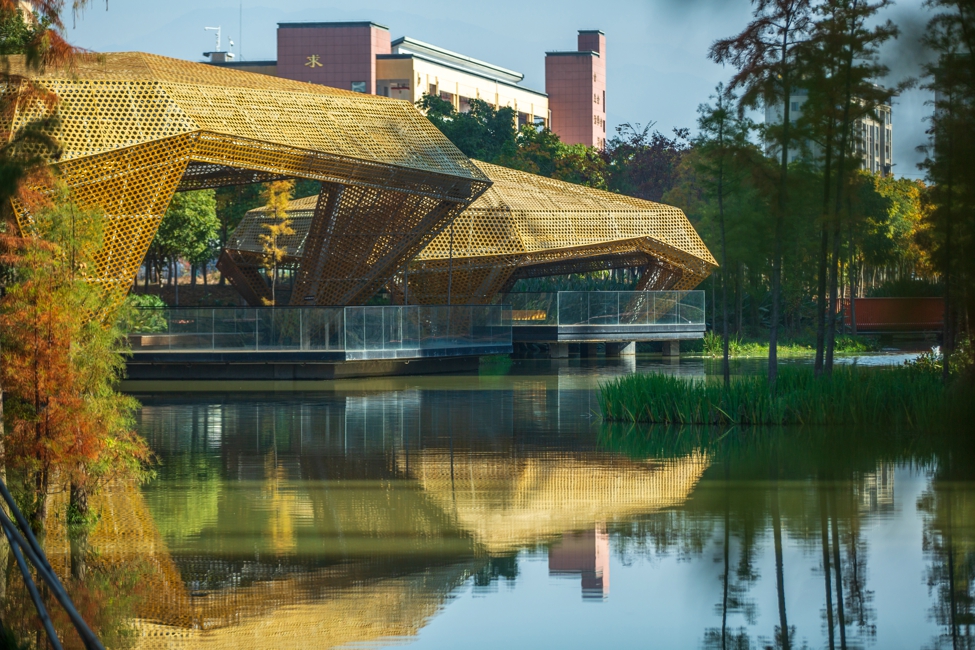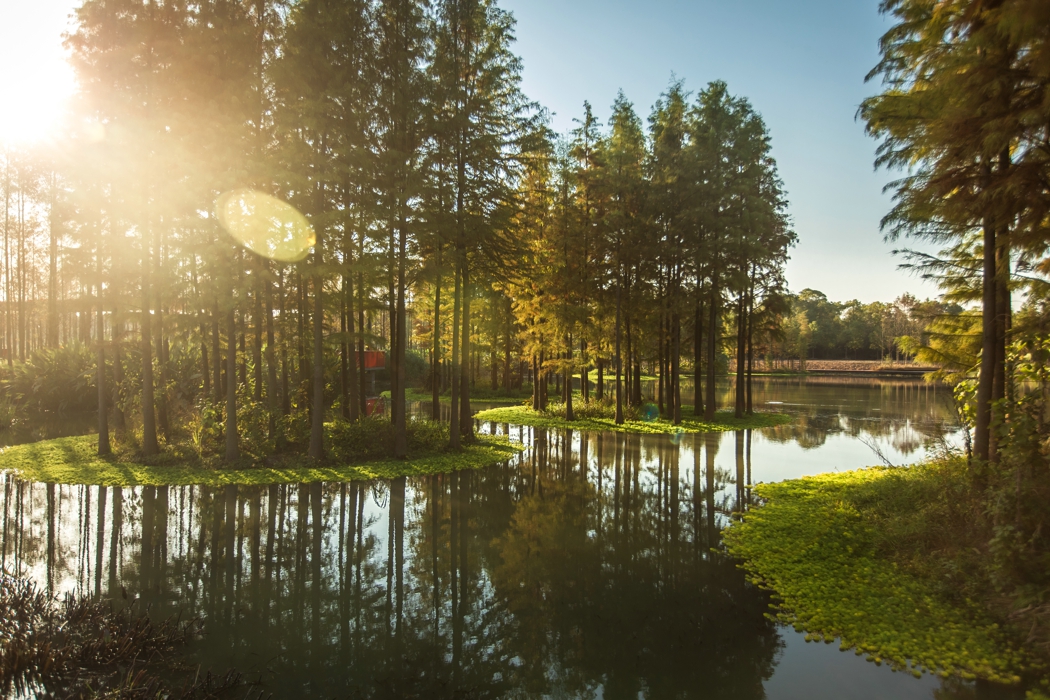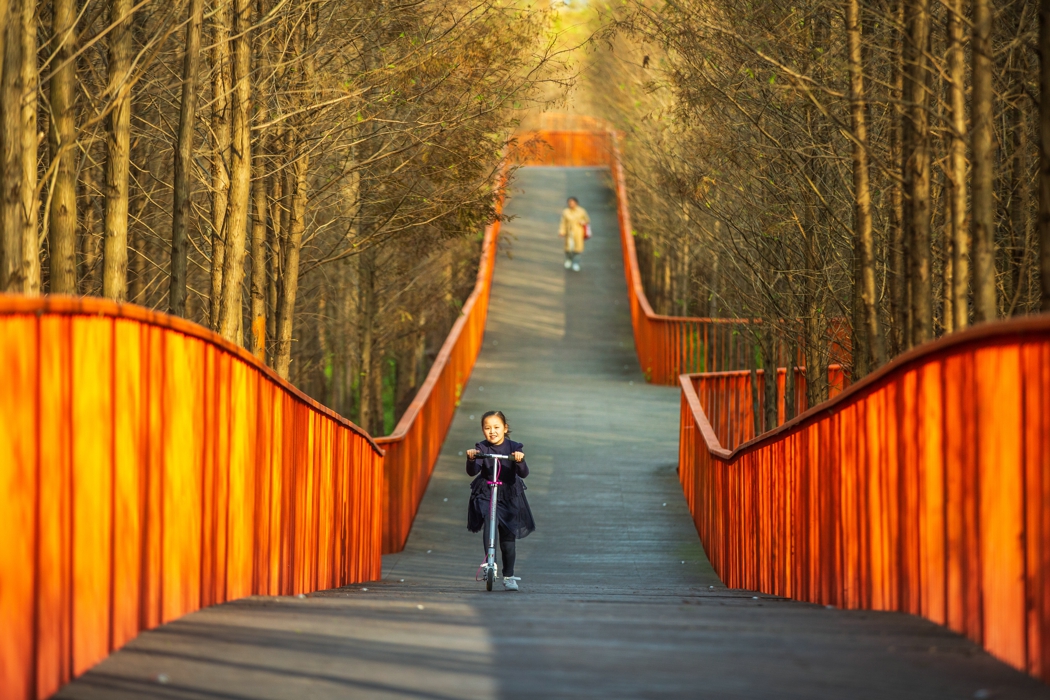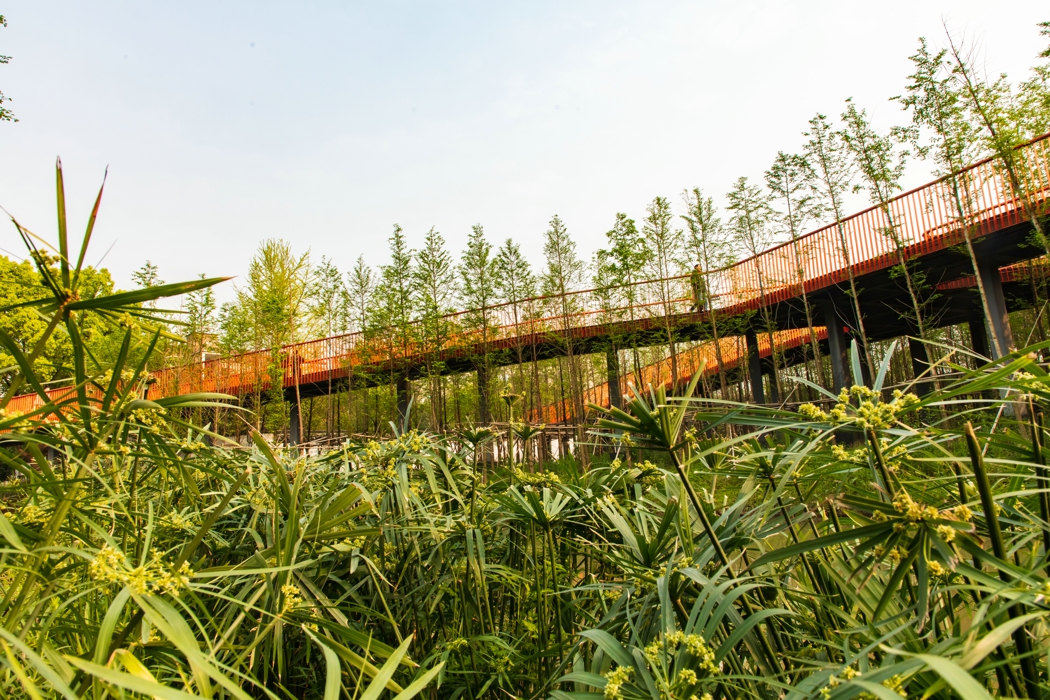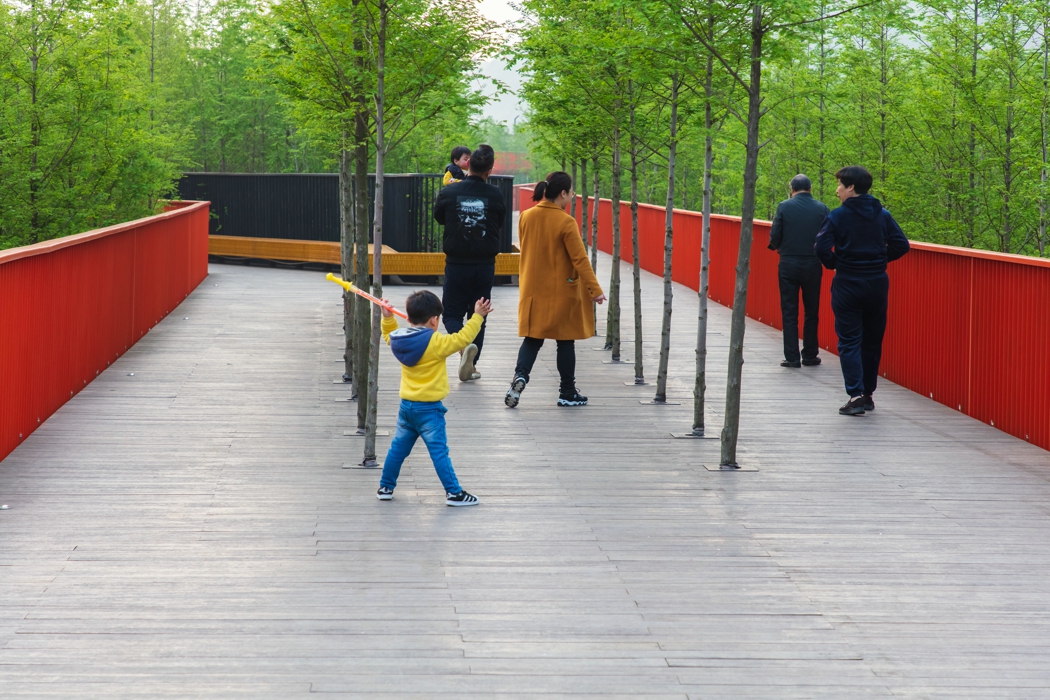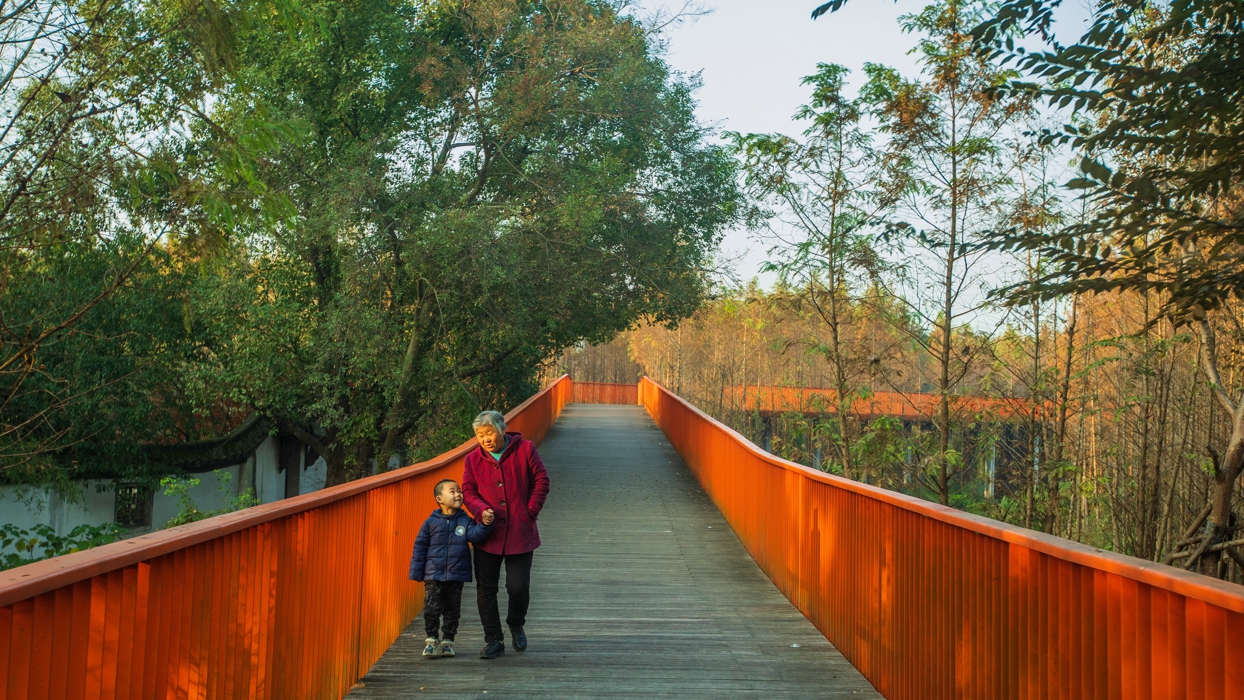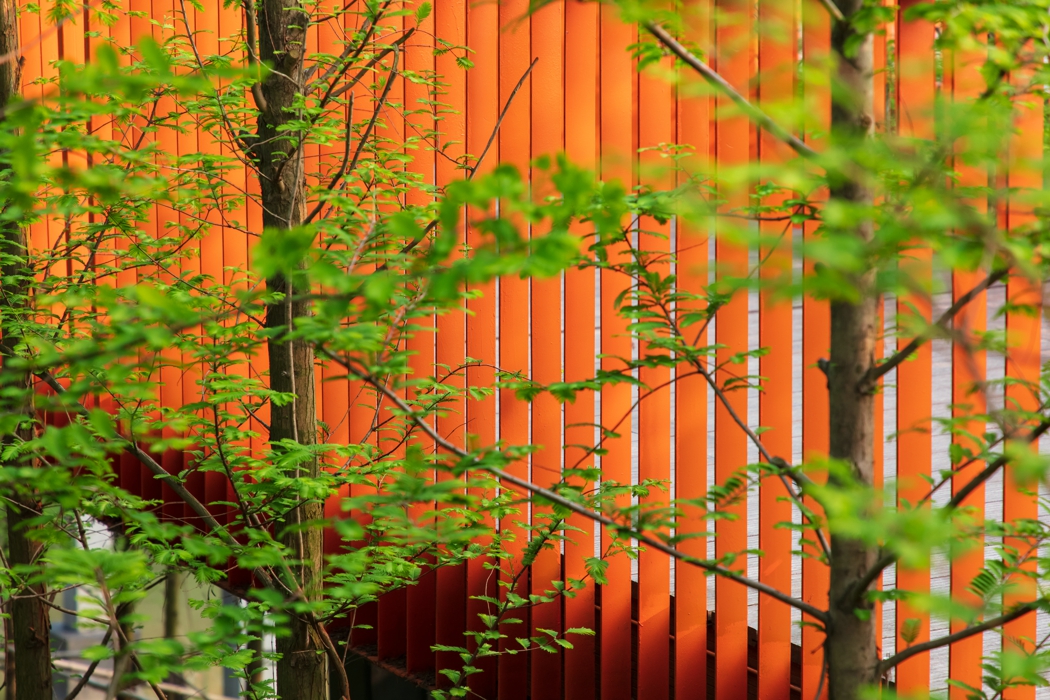Jinhua Lanxi Yangtze River Sponge Corridor
Project Information
- Project Location:
- China Lanxi, Zhejiang
- Project Scale:
- 48.52 Hectares
- Design Time:
- January 2016
- Build Time:
- May 2019
- Client:
- Lanxi Municipal Engineering Management Office
- Related Papers
Project Profile
1. Project Statement
The Yangtse River is located in the Shang Hua area of Jinhua, Zhejiang Province, at the confluence of the Jinhua and Lan rivers, on relatively flat terrain, and is an inland river. The design area is about 48.52 hectares, the river length is about 5 kilometres and the average width of the riverbed is approximately 60 metres.
2. Objective and Challenge
2.1 The challenge: how to combine the current situation and the master planning to build a sponge park.
The master planning design status quo riverbed space is squeezed by the city; the site is raised and the riverbed is filled in, making it difficult to retain riparian vegetation; the water conservancy project is only an option for rapid drainage and the water environment deteriorates.
2.2 Countermeasures: It is necessary to coordinate the master planning, retain the river valley, coordinate the planning and balance the land use; divide and stagnate the water, increase the storage capacity and dissipate the flooding; create a wetland system to purify the surface source pollution, with a purification capacity of about 14,000 square meters (1 hectare of wetland purifies 800 tons of domestic sewage/day); take the water flexibly, the purified water can guarantee the arable land water and future urban water (the average monthly water consumption is about 170,000 square meters), and ultimately creating a sponge park with the functions of "infiltration", "retention", "storage", "purification", "use" and "drainage" in one.
2.3 Programme features
1) To create a sponge park to alleviate flooding and store rainwater.
2) It needs to be connected to the current situation and facilitate the start of construction in the near future; it also needs to be connected to the long-term future urban development and construction plan.
3) An ecological conservation park that protects the vegetation landscape and restores a natural mudflat wetland environment.
3. Design Strategy
The scheme is based on the principle that the recent development can be implemented, taking into account the long-term articulation, and the Yangtse River is designed in detail in sections. There are ten nodes from north to south being: Lan Yin Liang Gu section, Qujiang Road and 330 National Road intersection section, Qujiang Road and Shang Ying Hua section, Shang Ying Hua Road to Yangtse River West Road section, Chengnan Primary School section, Chengnan Secondary School section, Peng Heng Road to Peng Shi Road section, Peng Shi Road to Xing Zhi North Road section, Xing Zhi College section, Xing Zhi South Road section to 330 National Road section.
The design focuses on the creation of two landscape nodes, the Lan Yin Liang Gu section and Xing Zhi South Road section to 330 National Road section.
The Lan Yin Liang Gu section is an important node connecting the old city with the Lanhu Resort because of its location at the confluence of the Yangtse and Qu rivers, and is a vibrant showcase for the new city of Shanghua and a highlight project section for the creation of the Heng Shan tourist wetland landscape. The design retains the current river valley appearance and builds a three-dimensional landscape walkway (Orchid Bridge) on the river valley, using the shape of Orchid, the city flower of Lanxi, to extract elements from the design, starting from the intersection of Qujiang Road and 330 National Road to the top of the Qujiang embankment road. The design uses bamboo and wood paving and other ecological landscape materials, the width is controlled between 3-10 metres. The space beneath the landscape walkway is maintained as the original status quo landform for biological habitats, making it an organic combination of traffic, recreation and aesthetics.
The section between Xing Zhi South Road to 330 National Road is located at the junction of the necessary passage from Jinhua to Lanxi, so the visual effect of the landscape needs to be considered. The design adopts the concept of a storm corridor bridge, which is a modern steel structure folding landscape bridge with a width of 5-7m. A service building is set up at the entrance plaza, and the characteristic viewing platform "Pearl Pavilion" is designed in conjunction with the service building.
4. Conclusion
4.1 The project is located in the Shang Hua area of Lanxi, and will become an important demonstration area for the sponge city of Lanxi after completion, as well as an important part of the green corridor of the sponge city. Through the six measures of sponge: infiltration, retention, storage, purification, use and discharge, the main indicators and functions of the sponge park will be implemented, which will be of great importance to the future water quality of Ganjiang River and the improvement of the urban ecological environment and urban habitat.
4.2 This project is focused on the construction of an urban sponge park, effectively alleviate part of the urban flooding, reduce flood peaks, purify surface rainwater runoff. And show the characteristics of a sponge city with natural accumulation, natural infiltration, natural purification, comfortable and suitable for maintenance and alleviate the urban heat island effect and other functions, becoming a "breathing "sponge city" wetland park.
4.3 The project aims to build an urban ecological wetland park. After implementation, the project will be positioned as a sponge city wetland park integrating leisure, science and education, and ecological tourism, becoming an important demonstration area for sponge city wetland parks in the region. The policy, social, geological, traffic and construction conditions required for implementation are basically available.
In summary analysis, the construction of this project is necessary and urgent, the project construction conditions are basically available, the construction scale is reasonable, the investment scheme and financing scheme are feasible, and the social benefits are good.
